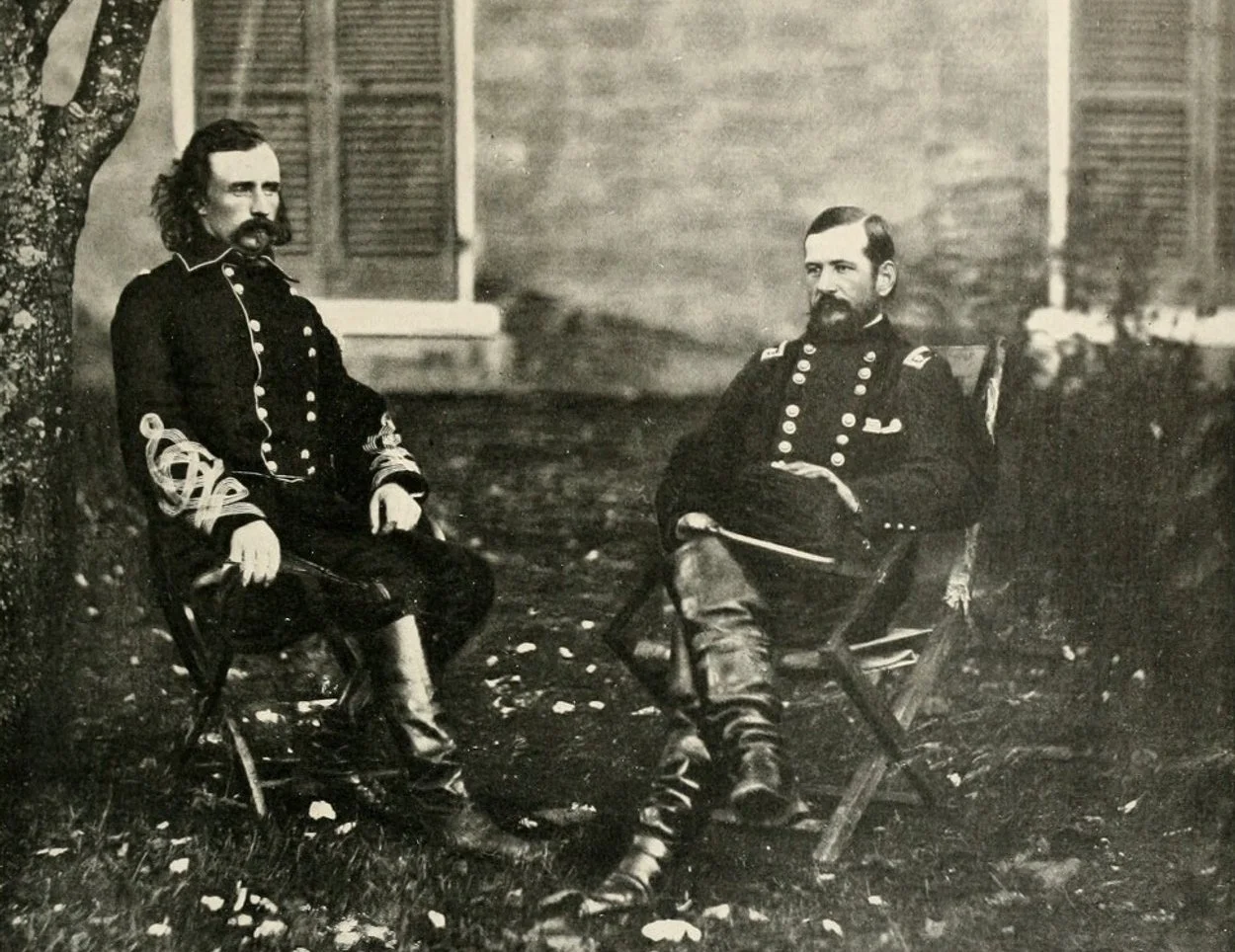Custer's Last Stand
Custer (left) with Alfred Pleasonton in autumn 1863
Steve French returns to the 2022 Victorian Chautauqua on Sunday, July 10 with a captivating lecture on General Custer’s Battle of the Little Bighorn. Also known as Custer's Last Stand, the combined forces of the Lakota Sioux, Northern Cheyenne, and Arapaho tribes defeated the 7th Cavalry Regiment of the United States Army under Custer’s command. The battle was the most significant action of the Great Sioux War of 1876.
The fight was an overwhelming victory for the Lakota, Northern Cheyenne, and Arapaho, who were led by several major war leaders, including Crazy Horse and Chief Gall, and had been inspired by the visions of Sitting Bull. With a force of 700 men, The U.S. 7th Cavalry suffered a major defeat while commanded by Lieutenant Colonel George Armstrong Custer (formerly a brevetted major general during the American Civil War). Five of the 7th Cavalry's twelve companies were annihilated in the conflict, and Custer was killed along with two of his brothers, a nephew, and a brother-in-law. The total U.S. casualty count included 268 dead and 55 severely wounded – six died later from their wounds.
Towards the end of spring in 1876, the Lakota and the Cheyenne held a Sun Dance, the most important spiritual event of the year. It was also attended by a number of "Agency Indians" who had slipped away from their reservations.
At a June 5, 1876, Sun Dance on Rosebud Creek in Montana, Sitting Bull, the spiritual leader of the Hunkpapa Lakota, reportedly had a vision of "soldiers falling into his camp like grasshoppers from the sky." At the same time, US military officials were conducting a summer campaign for June 25–26 to force the Lakota and the Cheyenne back to their reservations, using infantry and cavalry in a so-called "three-pronged approach."
Public response to the Great Sioux War varied in the immediate aftermath of the battle. Libbie Custer, Custer's widow, soon worked to burnish her husband's memory, and during the following decades, Custer and his troops came to be considered iconic, even heroic, figures in American history. The battle and Custer's actions, in particular, have been studied extensively by historians. Little Bighorn Battlefield National Monument honors those who fought on both sides.
Sharply criticizing the self-styled “Indian fighter,” Indigenous people’s movements have emphasized Custer’s role in the U.S. government’s land theft, treaty violations, and atrocities against Native Americans.
Standing Rock Sioux theologian and author Vine Deloria, Jr. told the Los Angeles Times in 1996 that he considered Custer “the Adolf Eichmann of the Plains.” In his 1969 book Custer Died for Your Sins, Deloria condemned Custer’s violations of the 1868 Fort Laramie Treaty, establishing the Black Hills region as unceded territory of the Sioux and Arapaho peoples. Custer’s violations of the Fort Laramie Treaty included an 1874 gold expedition and the 1876 Battle of Greasy Grass (Battle of the Little Bighorn).
Critics have also highlighted Custer’s 1868 Washita River surprise attack that killed Cheyenne non-combatants, including mothers, children, and elders. Custer was following Generals William Sherman and Philip Sheridan’s orders for “total war” on the Indigenous nations. Describing total war methods, Sherman wrote, “We must act with vindictive earnestness against the Sioux, even to their extermination, men, women, and children...during an assault, the soldiers can not pause to distinguish between male and female, or even discriminate as to age.
Indigenous criticism of Custer’s posthumous legacy may have begun immediately after Custer died. Good Fox (Lakota) recounted:
"I was told that after the battle, two Cheyenne women came across Custer’s body. They knew him, because he had attacked their peaceful village on the Washita. These women said, ‘You smoked the peace pipe with us. Our chiefs told you that you would be killed if you ever made war on us again. But you would not listen. This will make you hear better.’ The women each took an awl from their beaded cases and stuck them deep into Custer’s ears.”
Hear From The Expert
For many years, Steve French has studied this famous battle and has lectured about it at military symposiums, universities, and various historical societies. The illustrated talk will examine the background to battle, the fight, its aftermath, and its role in popular culture. Gen. George Crook’s role in the ill-fated campaign will also be discussed.





